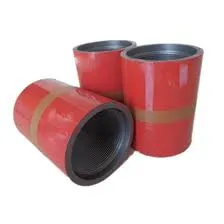- Afrikaans
- Albanian
- Amharic
- Arabic
- Armenian
- Azerbaijani
- Basque
- Belarusian
- Bengali
- Bosnian
- Bulgarian
- Catalan
- Cebuano
- Corsican
- Croatian
- Czech
- Danish
- Dutch
- English
- Esperanto
- Estonian
- Finnish
- French
- Frisian
- Galician
- Georgian
- German
- Greek
- Gujarati
- Haitian Creole
- hausa
- hawaiian
- Hebrew
- Hindi
- Miao
- Hungarian
- Icelandic
- igbo
- Indonesian
- irish
- Italian
- Japanese
- Javanese
- Kannada
- kazakh
- Khmer
- Rwandese
- Korean
- Kurdish
- Kyrgyz
- Lao
- Latin
- Latvian
- Lithuanian
- Luxembourgish
- Macedonian
- Malgashi
- Malay
- Malayalam
- Maltese
- Maori
- Marathi
- Mongolian
- Myanmar
- Nepali
- Norwegian
- Norwegian
- Occitan
- Pashto
- Persian
- Polish
- Portuguese
- Punjabi
- Romanian
- Russian
- Samoan
- Scottish Gaelic
- Serbian
- Sesotho
- Shona
- Sindhi
- Sinhala
- Slovak
- Slovenian
- Somali
- Spanish
- Sundanese
- Swahili
- Swedish
- Tagalog
- Tajik
- Tamil
- Tatar
- Telugu
- Thai
- Turkish
- Turkmen
- Ukrainian
- Urdu
- Uighur
- Uzbek
- Vietnamese
- Welsh
- Bantu
- Yiddish
- Yoruba
- Zulu
Optimizing Coupling Solutions for Tubing Applications in Various Industries
Understanding Coupling for Tubing A Key Component in Oil and Gas Exploration
In the oil and gas industry, the significance of efficient and reliable equipment cannot be overstated. One such essential component is the coupling for tubing, which plays a critical role in ensuring the seamless transportation of hydrocarbons from underground reservoirs to the surface. This article delves into the concept of couplings in tubing, their types, applications, and the impact they have on operational efficiency in drilling and production processes.
A coupling is a device used to connect two segments of pipe or tubing, allowing for a continuous flow of liquids or gases. In the context of oil and gas, tubing couplings link various lengths of tubing, ensuring a tight seal to prevent leaks and maintain pressure. Properly designed and implemented couplings are vital for the integrity of the entire pipeline system.
Types of Couplings
There are primarily two types of couplings used in tubing applications threaded couplings and welded couplings
.1. Threaded Couplings These are characterized by male and female threads that screw together to form a secure connection. They are commonly used in applications that require disassembly for maintenance and inspection. The threaded design allows for easy installation and removal, making it a popular choice among engineers. However, the integrity of the connection depends heavily on the skills of the technician performing the installation.
2. Welded Couplings In contrast, welded couplings are permanently joined by welding the ends of the tubing to the coupling itself. This method offers a stronger and more leak-proof connection compared to threaded couplings, making it suitable for high-pressure environments. However, the downside is that welded couplings are not easily disassembled, which can pose challenges during maintenance operations.
coupling for tubing

Applications in Oil and Gas
In oil and gas extraction, tubing couplings are used in various applications, from drilling to production. For instance, during drilling operations, tubing is inserted to create a conduit for the extraction of oil or gas. Couplings are employed to connect different lengths of tubing, enabling the drill string to reach deeper reservoirs. Once drilling is complete, production tubing is installed using couplings, allowing for the efficient transport of hydrocarbons to the surface facilities.
Importance of Quality and Standards
The quality of couplings directly impacts the safety and efficiency of drilling operations. High-quality couplings are designed to withstand extreme pressures and temperatures, minimizing the risk of failure and leaks. Regulatory bodies such as the American Petroleum Institute (API) set specific standards for the manufacturing and testing of tubing couplings to ensure they meet the industry’s rigorous safety and performance requirements.
Conclusion
In summary, coupling for tubing is a vital element in the oil and gas sector, facilitating the safe and efficient transportation of hydrocarbons from the reservoir to the surface. With various types of couplings available and stringent quality standards in place, operators must carefully consider their coupling choices to ensure operational integrity. As the industry continues to evolve, advancements in materials and manufacturing processes will likely enhance the performance and reliability of tubing couplings, contributing further to the efficiency and safety of oil and gas extraction operations.
-
Tubing Pup Joints: Essential Components for Oil and Gas OperationsNewsJul.10,2025
-
Pup Joints: Essential Components for Reliable Drilling OperationsNewsJul.10,2025
-
Pipe Couplings: Connecting Your World EfficientlyNewsJul.10,2025
-
Mastering Oilfield Operations with Quality Tubing and CasingNewsJul.10,2025
-
High-Quality Casing Couplings for Every NeedNewsJul.10,2025
-
Boost Your Drilling Efficiency with Premium Crossover Tools & Seating NipplesNewsJul.10,2025







